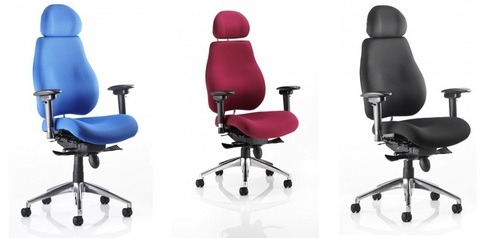 Good posture
is easy in theory but difficult to practice.
Good posture
is easy in theory but difficult to practice.
When you’re
sitting at a desk, staring at a screen for hours it’s easy to let posture slip.
We tend to
slump a little, slouch a lot, lean forward, hunch and generally move around.
The muscles responsible
for keeping us upright are the abdominal muscles and the back muscles (intertransversarii
muscle, multifidus spinae, trapezius muscle)
Leaning
forward 30 degrees to get closer to your computer screen puts 3 to 4 times more
strain on the back, causing premature wear and tear on the joint surfaces,
ligaments of the spine, and the discs located between the vertebrae.
The back
muscles are also negatively affected as the continuous added strain causes them
to tighten, reducing optimal blood flow. Over time this posture leads to the
development of tight, rigid muscles and joints, which in turn makes them prone
to injury.
Here’s a
quick 6 point guide to sitting comfortably and reducing back pain;
 1. Elbow position
1. Elbow position
First, begin by sitting comfortably as close as possible to your desk
so that your upper arms are vertical, parallel to your spine and rest your
hands on your desktop / keyboard.
If your elbows are not at a 90-degree angle, adjust your office chair
height either up or down.
2. Thigh position
You should be able to slide your fingers under your thigh at the front
edge of the office chair. If it is too tight, you need to prop your feet up
with an adjustable footrest or adjust the seat height but remember point 1!
3. Calf position
Sit back against the chair back and place your hand between the back of
your calf and the front edge of your office chair. If you can’t, you will need
to adjust the chair backrest, lumbar support or seat depth by using a seat
slide if one is fitted, or get a new office chair!
 4. Lower back
4. Lower back
When you sit correctly with you back against the back rest, there
should be cushioning that causes your lower back to arch slightly to encourage
you not to slump forward or slouch down in the chair. This low back support in
an office chair is essential to minimize the strain on your back.
5. Eye level
Your resting gaze should be aimed at the centre of your computer
screen. If your computer screen is higher or lower than your gaze, you need to
either raise or lower it to reduce neck strain.
6. Armrest
 Adjust the armrest of the office chair so that it just slightly lifts
your arms at the shoulders. Using an armrest on your office chair is a great
way to take some of the strain off your neck and shoulders and should make you
less likely to slouch forward in your office chair.
Adjust the armrest of the office chair so that it just slightly lifts
your arms at the shoulders. Using an armrest on your office chair is a great
way to take some of the strain off your neck and shoulders and should make you
less likely to slouch forward in your office chair.



.jpg)










